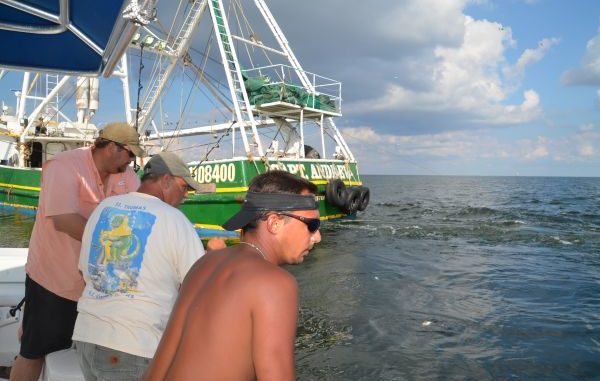
The fall Grand Isle tuna game starts with finding big deep sea, steel-hull shrimp trawlers at work.
Blake Fouquier put it bluntly: “No trawlers; no fish.”
The Fouquiers leave the marina early, wanting to be on their targeted fishing grounds before it is full daylight. The shrimp boats’ bright deck lights allow them to more easily pick out their targets, although Fouquier admits that running to lights can sometimes fool them. Oilfield supply boats are also lit up.
On a typical morning working out of Grand Isle, they will run to about 5 miles south of West Delta Block 117. If they don’t spy anything there they travel westerly to look for shrimpers. The South Timbalier blocks are also very good, Fouquier said.
Sometimes they find shrimpers right away with no competition with other recreational boats, and the slaughter is on. Other times they have to look two or three hours just to find the first boat.
Competition from other sportfishing boats complicates things. A trawler that is repeatedly hit by sport boats will have a lot of its tuna pulled away from the vessel. Fouquier believes that one of the reasons, including declining water temperatures, that this type of fishing plays out by early November is that tuna react to fishing pressure by moving back into deep water.
Fouquier specified that trawlers to be fished should be actively working — their trawls should be in the water. A running boat, with trawls suspended in the rigging, is not productive for tuna fishing.
